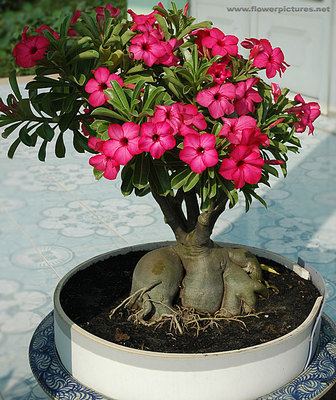Rank Species | Genus Adenium Higher classification Adenium | |
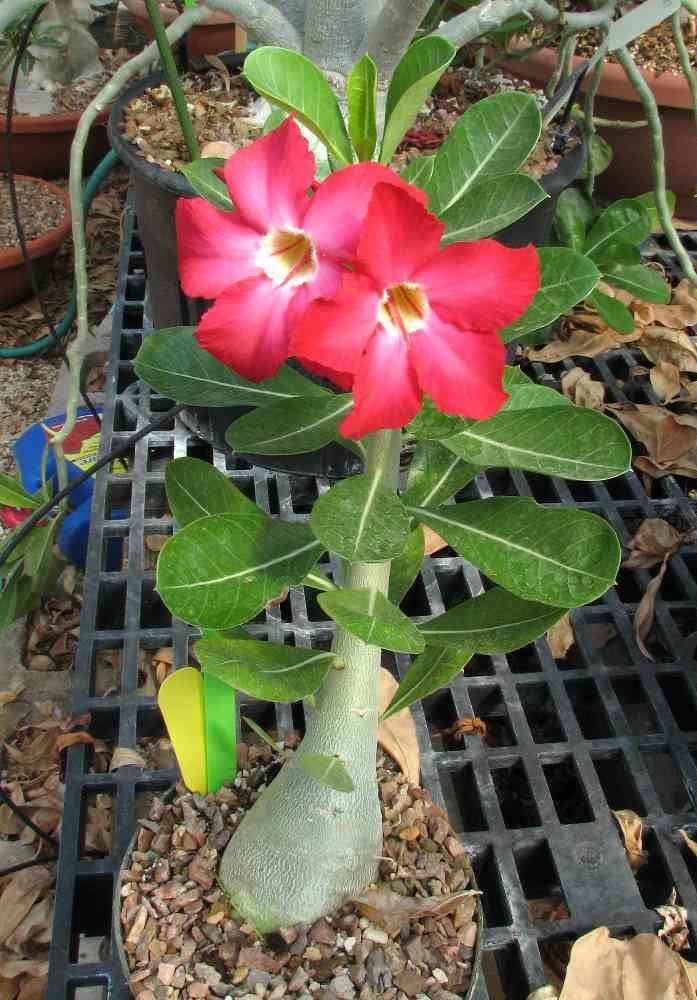 | ||
Similar Adenium arabicum, Apocynaceae, Frangipani, Adenium multiflorum, Oleander | ||
How to grow adenium obesum
Adenium obesum is a species of flowering plant in the dogbane family, Apocynaceae, that is native to the Sahel regions, south of the Sahara (from Mauritania and Senegal to Sudan), and tropical and subtropical eastern and southern Africa and Arabia. Common names include Sabi star, kudu, mock azalea, impala lily and desert rose.
Contents
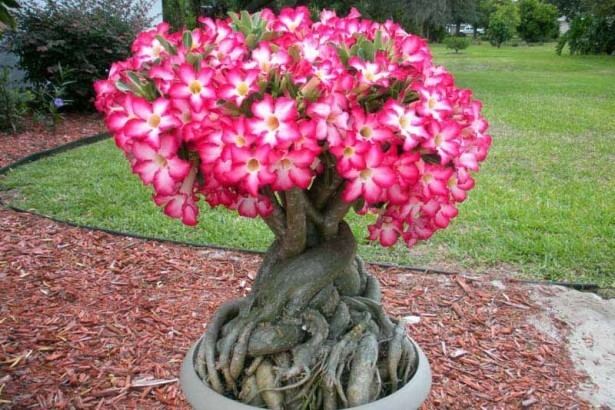
Description
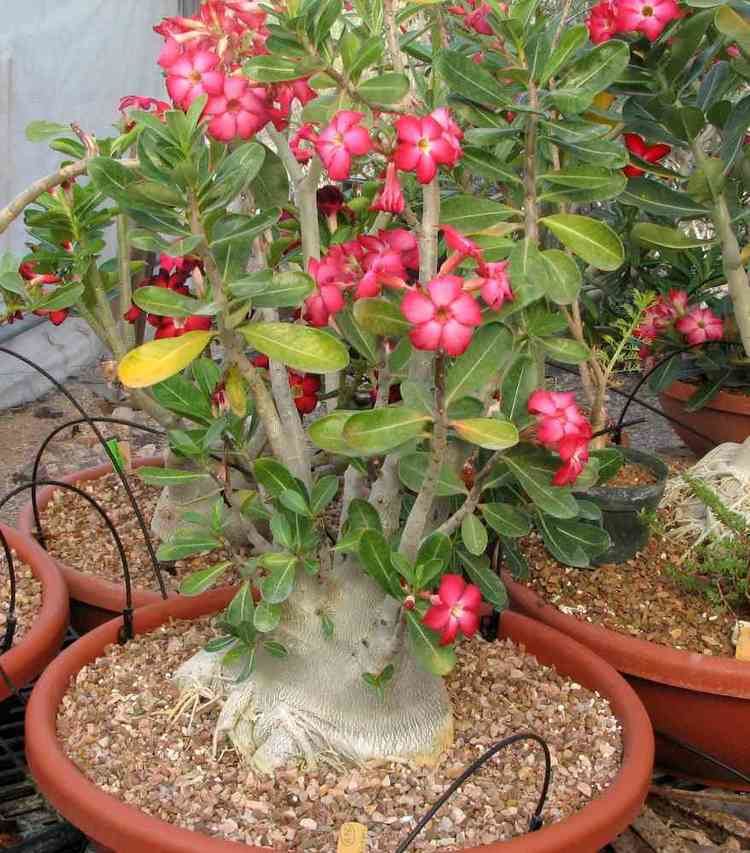
It is an evergreen or drought-deciduous succulent shrub (which can also lose its leaves during cold spells, or according to the subspecies or cultivar). It can grow to 1–3 m (3.3–9.8 ft) in height, with pachycaul stems and a stout, swollen basal caudex. The leaves are spirally arranged, clustered toward the tips of the shoots, simple entire, leathery in texture, 5–15 cm (2.0–5.9 in) long and 1–8 cm (0.39–3.15 in) broad. The flowers are tubular, 2–5 cm (0.79–1.97 in) long, with the outer portion 4–6 cm (1.6–2.4 in) diameter with five petals, resembling those of other related genera such as Plumeria and Nerium. The flowers tend to red and pink, often with a whitish blush outward of the throat.
Taxonomy
Some taxonomies consider some other species in the genus to be subspecies of Adenium obesum.
Subspecies

Uses

Adenium obesum produces a sap in its roots and stems that contains cardiac glycosides. This sap is used as arrow poison for hunting large game throughout much of Africa and as a fish toxin.
Cultivation
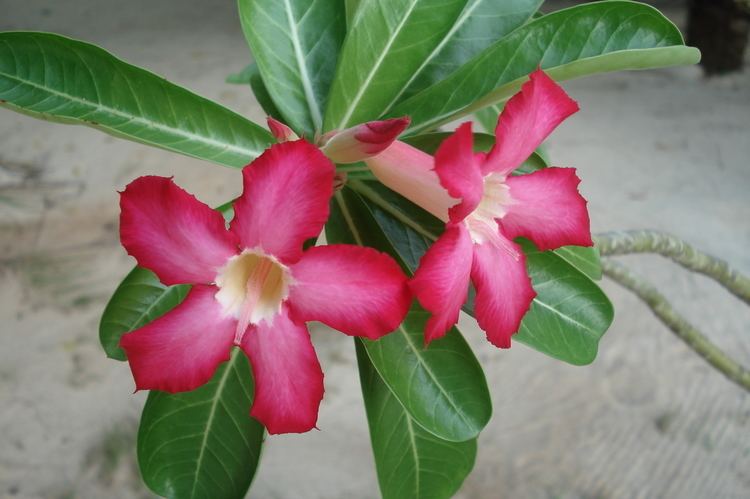
Adenium obesum is a popular houseplant and bonsai in temperate regions. It requires a sunny location and a minimum indoor temperature in winter of 10 °C (50 °F). It thrives on a xeric watering regime as required by cacti. A. obesum is typically propagated by seed or stem cuttings. The numerous hybrids are propagated mainly by grafting on to seedling rootstock. While plants grown from seed are more likely to have the swollen caudex at a young age, with time many cutting-grown plants cannot be distinguished from seedlings. Like many plants, Adenium obesum can also be propagated in vitro using plant tissue culture.
This plant has gained the Royal Horticultural Society's Award of Garden Merit.

